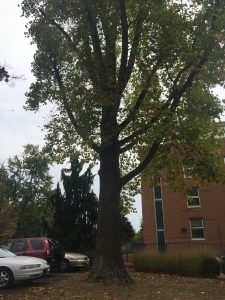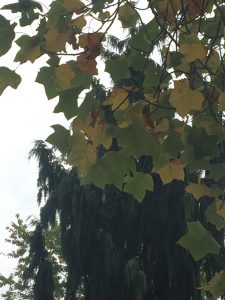I was walking behind Bornhuetter Hall when I found some strange shaped leaves on the ground. I looked up to find the source: a tall deciduous tree whose leaves were just starting to change yellow.


Not being the best at plant identifica-tion, I decided that this would be good practice because the leaves are kind of uniquely shaped. So looking at a leaf guide I found that this was a Liriodendron tulipifera or a tulip tree. So called because the shape of its bloom in spring and the shape and color of its leaves. According to the Ohio Department of National Resources: Division of Forestry, tulip trees are native to the Eastern United states and one of the fastest growing shade trees. They also serve as a drought indicator, dropping their interior leaves when the soil is too dry.

Sources:
Ohio Department of National Resources: Division of Forestry
http://forestry.ohiodnr.gov/tuliptree
